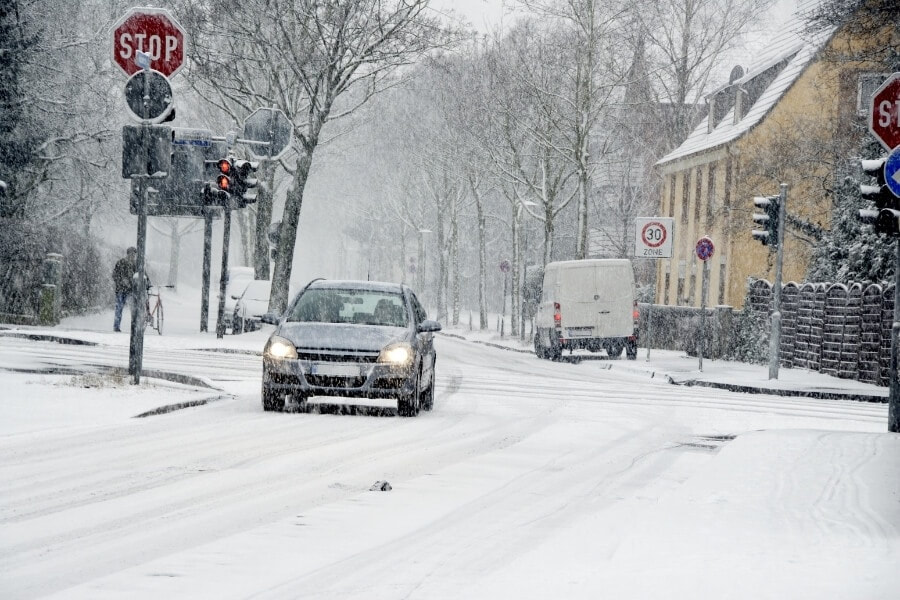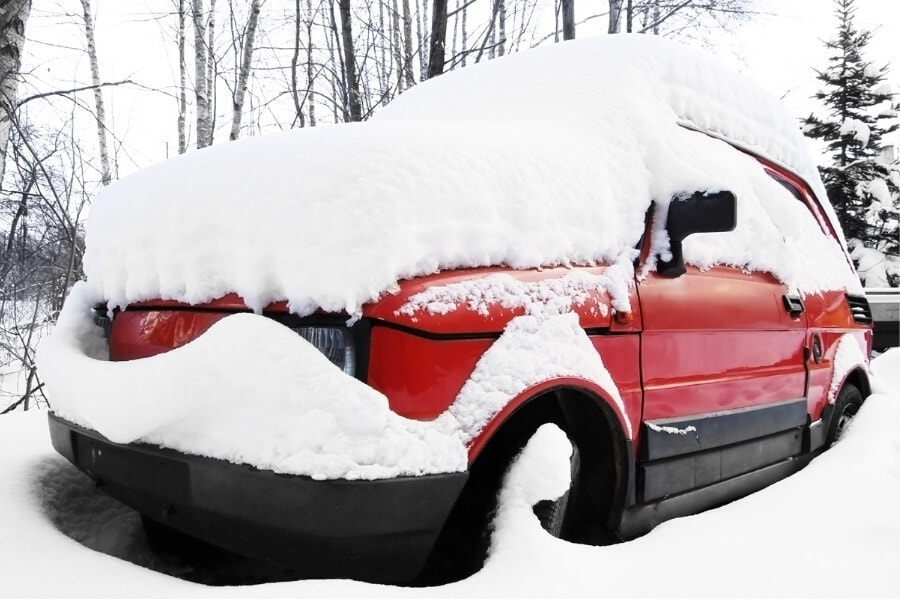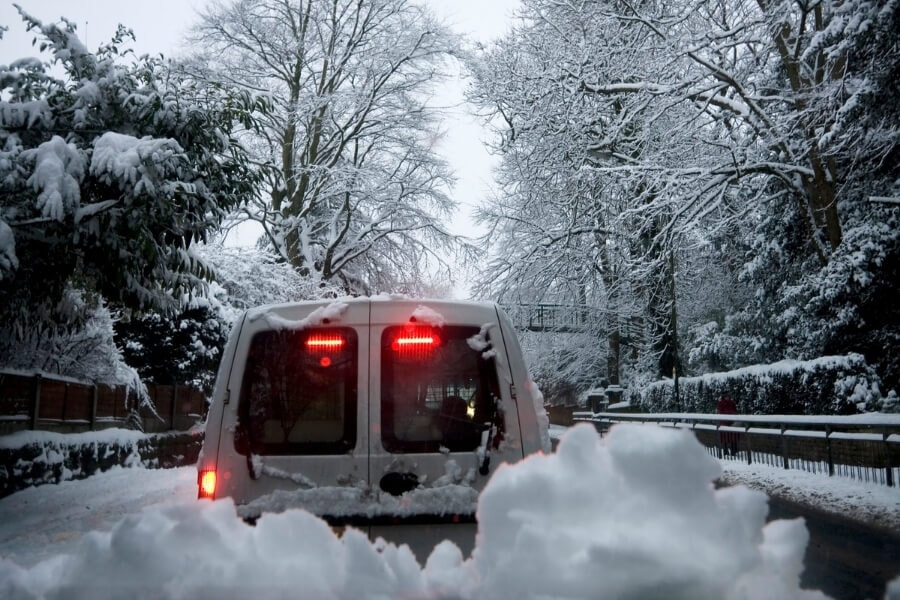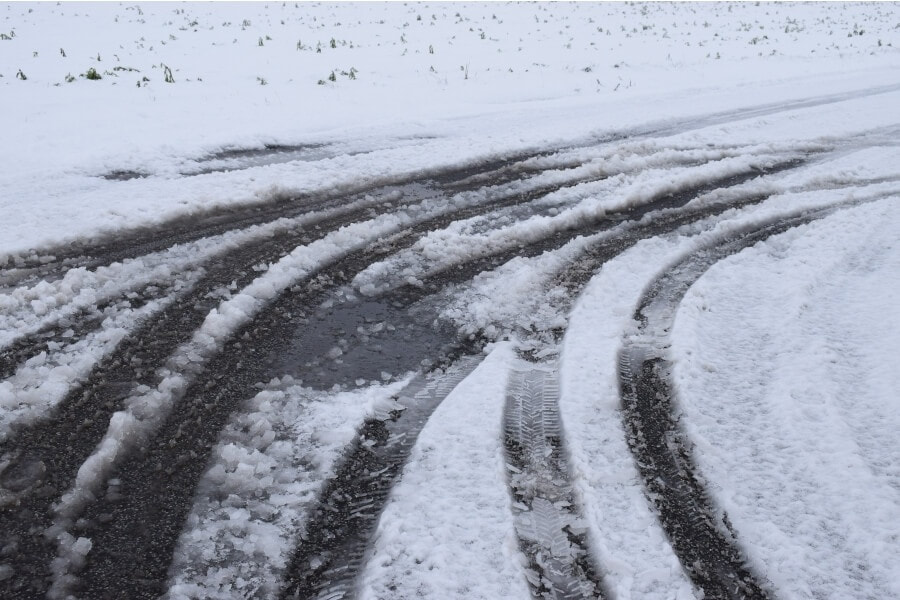Rhode Islanders are no strangers to driving in the snow. From that very first winter of driving after we got our drivers license we began honing our snow driving skills.
The truth is, Rhode Island roads are more congested than ever—people are always on the go, which can make driving in the snow even more of a challenge.
Our tow trucks tow more cars in the winter than any other season. From car accidents on 95 due to the slippery roads, to cars stuck in snowbanks in Providence, to SUVs that slid off the side of the road in Johnston—our towing business has seen it all.
Here are 6 awesome tips for driving in the snow to help you stay safe this winter.
1. Consider Not Driving
Just because we can drive in the snow...doesn’t mean we have to. Because we’re so used to driving in the snow here in lil Rhody, it’s not unusual for us to venture out while heavy snow is falling.
If you don’t absolutely have to drive in the snow, why not consider staying home? Keep a steady supply of hot cocoa or your favorite tea in the kitchen and you’ll always be ready for a snowy day at home.
Take the opportunity to have some family time—play board games, watch holiday movies, bake some cookies—enjoy the down time!
2. Take It Slow

This tip may seem like common sense, but how many times have you seen people flying past you while driving on the highway when it’s snowing? Probably too many!
It’s so easy to lose traction when there’s snow and slush on the roads. Snow makes the roads extremely slippery, which makes it easy to lose control of your vehicle.
3. Be Prepared
There are a few things you can do to prepare your automobile for the winter months.
Fill your windshield washer fluid reservoir with a washer fluid that has a low freezing point. When your windshield is covered in slush, dirty snow, and road salt you’ll be happy you did. Winter storms make a real mess of our windshields so it’s important to keep those reservoirs filled.
Inspect your tires—in addition to checking the wear on the tire’s tread, look for any bumps, cuts, or punctures. If your tires are worn down you will be slipping and sliding all over those slick roads, so it may be time for some new ones. If you or a loved one finds themself stranded with a flat tire this winter, call the best towing service in Rhode Island for assistance.
Try to keep at least a half tank of gas in your vehicle during the winter months. In case you break down on the side of the road, or get stuck in a snowbank, you’ll be able to stay warm by keeping your engine on so you can run the heat.
Throw together an emergency kit in case you get stuck, stranded, or in a collision. Some items you may want to include are: a warm blanket, flares, warm gloves, a flashlight, water, and a few snacks.
Don’t forget to put a can of de-icer to defrost frozen locks and a small shovel in case you need to dig your tires out. It’s also helpful to keep a bag of sand in your trunk—you can spread it behind any tires that are stuck to help give you traction.
Slowing down when it’s snowing is one of the easiest preventative measures you can take for driving safe in the snow. Slowing down gives you more time to react if you do begin to slide or if someone near you begins to slide towards you.
If you must drive in the snow, giving yourself extra time when it’s snowing allows you to travel at a reduced speed without feeling rushed.
4. Remove That Snow!

Okay, most of us New Englanders are guilty of this at some point in our driving history. Maybe we just had to run to the market and didn’t feel like clearing all that snow off the car, and on the way home we hit the brakes at a Stop sign and all the snow on the roof of our car flies down onto the windshield. Or, even worse, you’re driving on the highway and it flies off the back of your vehicle hitting the car behind you. Ugh.
It’s important to clear all of the snow off your car before you hit the road. It’s an avalanche waiting to happen! Snow can quickly turn to ice and if it flies off your car not only could it cause damage to your vehicle, but it could cause damage to someone else’s vehicle. Even worse—it could cause an accident.
So take the extra couple of minutes and clear that mountain of snow off your car!
5. Don’t Stop on Hills
We all have that one hill in our neighborhood that we’re hesitant of driving up or down when there’s snow on the roads...because we know...we may not make it up or down without sliding into another car or a telephone pole.
If there’s an alternate route you can use to avoid the hill—great! Better safe than sorry.
If there’s not an alternate route and you must drive up the hill, try and wait until any cars in front of you are all the way up the hill to avoid getting hit by them if they begin to slide backwards.
Approach the hill with a bit of speed in order to have enough momentum to get you up the hill. Try to keep even pressure on the gas pedal but if your wheels begin to spin, let off the gas a little.
Don’t stop on that hill unless you absolutely must. If you stop it can be crazy hard to get enough momentum and traction to get you up that hill.
6. Keep A Safe Distance

Keeping a safe driving distance between you and the vehicle in front of you is always a good idea—and in the show, when the roads are super slippery...it could mean the difference between colliding with another vehicle or not.
It’s important to remember that it takes longer to slow down when braking on slippery roads. You don’t want to be stopping short or slamming on your brakes as that could cause you to spin out. You should brake with caution and leave plenty of space between you and vehicles in front of you.
Keeping a safe distance between you and other vehicles allows you to have enough time to react and find a safe escape route in the event of an accident or a car losing control on the road in front of you.
A good rule of thumb in dry conditions is the 3 second rule—but on snowy, slushy, slippery roads, doubling that to 6 seconds is a good idea. The 3 second rule is typically taught by driving instructors to help people avoid accidents. The idea is to keep 3 seconds between you and the car in front of you.
To measure the 3, or 6 seconds in the case of wet roads, simply pick an upcoming sign, tree, or other object on the side of the road. When the vehicle in front of you is passing it, begin to count how long it takes you to get to that object with the goal being at least 3-6 seconds depending on driving conditions.
We hope you don’t...but if you do get stuck in the snow and need a towing service in RI, our towing company offers 24 hour towing. Give us a call for help.
From our Rhode Island Tow Truck Service Family to Yours, Have a Cozy and Safe Winter!

